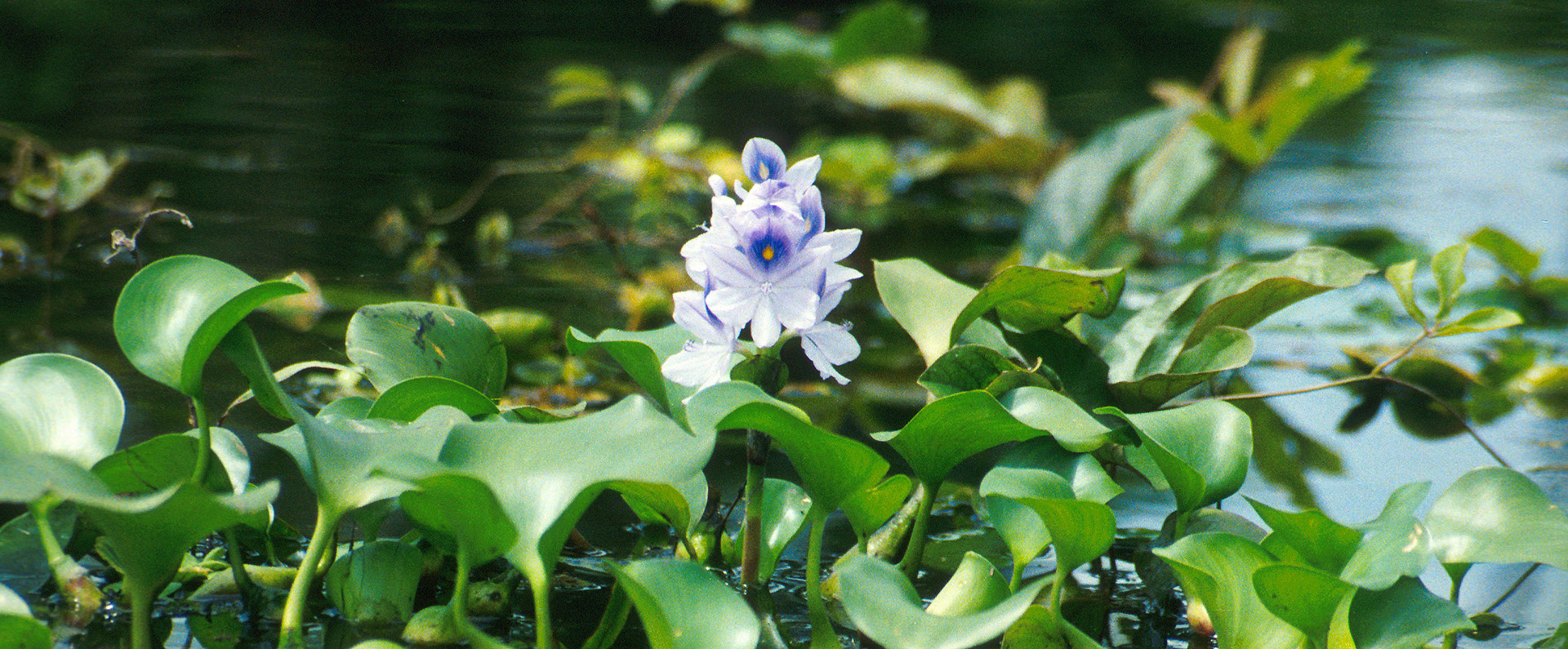Fighting a Pretty But Potent Weed

Water hyacinth is a free-floating perennial herb that grows to about 3 feet tall. Though known for its showy flowers and landscaping appeal, this native South American plant infests rivers and lakes and is considered one of the world's worst aquatic weeds. It has become especially problematic in Florida, the Southeastern United States, the Gulf Coast, and the Sacramento-San Joaquin River in northern California. Water hyacinth impedes commercial and recreational navigation and degrades native aquatic plants and fish habitats.
ARS scientists and collaborators have developed two new tools to improve water hyacinth control. The first uses satellite images to identify water hyacinth from other floating plant species. This tool tracks seasonal water hyacinth growth and allows pest control operators to track their success. The second tool is a biological control agent called "planthopper," which reduces water hyacinth size and reproduction, making the plant more susceptible to other control methods. Nearly 400,000 planthoppers have been released in Florida and California.
These new control tools make successful adaptive, integrated aquatic weed management possible. For example, peak water hyacinth coverage in the Sacramento-San Joaquin River declined 50 percent between 2014 and 2015, and the integrated control system in Florida is saving approximately $60 million per year in public lakes management.
Related Information
Article: Scientists Release Biocontrol for Water Hyacinth
Article: A Beautiful Menace: Tracking Water Hyacinth with Landsat



